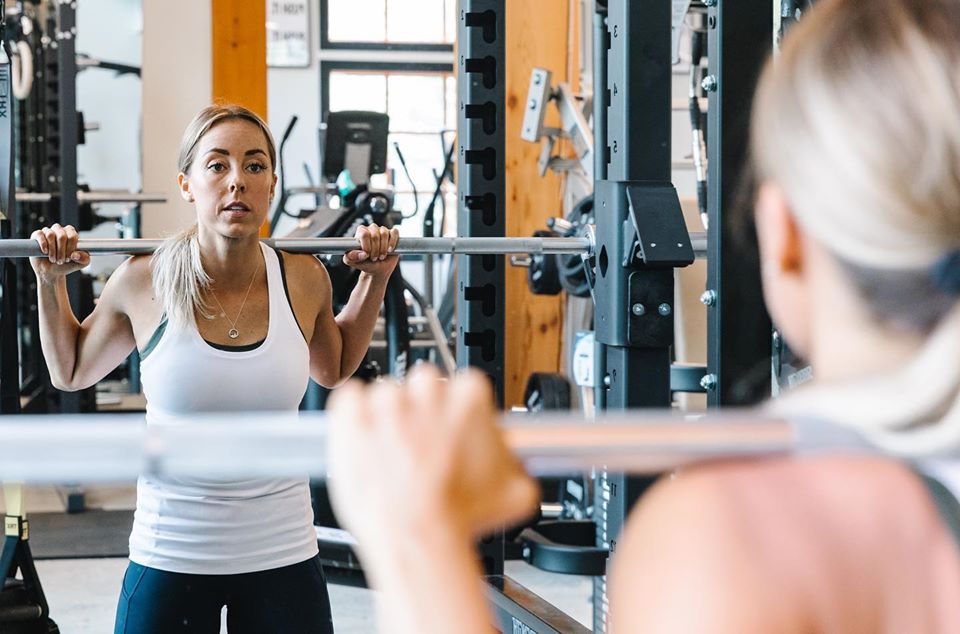More time to unwind starting December 12. The spa will be open every day, from 9 a.m. to 10 p.m.
Learn moreMindful exercise is a new and much-needed approach to your training regime that’s all about exerting the self physically while turning inwards mentally. We know meditation is good for mental well-being but sitting still can be a challenge for many – myself included – so finding a balance between the two has been paramount for not only our physical health but also mental well-being.
There’s certainly something to be said about tuning into your favourite podcast or playlist and zoning out while you do a simple activity – like walking, running, cycling – to let your mind run free while your body keeps moving. Alternatively, there’s something incredibly meditative about focusing in on what you’re accomplishing and feeling your own strength and power while you exercise.

Commonly, gym-goers and home-exercisers do their workout to distract themselves or to completely disengage from their bodies – they’re running, jumping, sweating and moving without a connection to how it actually feels. They finish the session tired and beat-up without actually cultivating the important mental component to movement.
As a Certified Personal Trainer, I can attest to how few clients come to me and say that actually think about where they should feel an exercise or even how to perform it properly. Once they attune their minds to focus on each movement, they are often blown away at how “challenging” a once easy-seeming exercise can become. The mind-to-muscle connection has been proven to reap incredible benefits physically but we’re now starting to understand that there is a strong positive mental component as well.
So – what are the benefits of mindful training?
- Decreased likelihood of injury: When you focus intently on your form and the muscles you should be engaging, you’re able to execute each exercise with improved precision and alignment which will prevent acute or overuse injuries in the long run.
- A more effective and efficient workout: When you fully mentally engage in your training session, you take shorter rest breaks, you can fit more exercises into your workout and you’ll accomplish more in a shorter period of time. Put down the phone and get your head into the session!
- More focus = Better results: Strengthening the mind-muscle connection is imperative to obtaining the desired results from your workouts. If you want to build or strengthen your glutes, for example, you should be able to feel them engage. If you’re squatting or lunging without the targeted sensations, you’re not likely to get the results you desire.
- Higher likelihood of adherence to your workout program: Setting smaller, daily goals is correlated to maintaining long-term success with goal setting so when you take the focus off the end goal and enjoy the process more, you will ultimately get to your anticipated results with the utmost efficiency.
So – how do we go about creating mindfulness in your training program?
- Prepare your training program for the day ahead of time and write down your goals for each session, including which muscles you’re focusing on so you know where you should feel each exercise.
- Start your workout with a quick body scan. Your body scan will dictate how you perform your warm-up and what level of intensity you’re willing to perform that day. Where do you feel the most tightness/restriction/discomfort? Focus your warm-up on those areas. For example, if your shoulders and back feel tight, focus on stretching and opening this area with properly applied mobility work and deep breathing.
- Put your phone on airplane mode so that there are no distractions from notifications.
- Slow down your repetitions. Use pauses. Squeeze the target muscles. Focus on where you should feel it with each rep. Think about the contraction and the relaxation of each movement. Feel the stabilization in your core. Create stability in your posture and alignment.
- If your mind wanders, take a deep breath to refocus your attention and keep on the program.
- When stretching or foam rolling during your cool down, ensure you’re moving slowly and breathing into the target muscles to obtain the most relaxation and benefit. Stretching or rolling are only as effective as the breaths you put into it. Without true, deep relaxation, the nervous system simply will not allow the muscle to lengthen fully.
If you’re looking to further improve your mindful movement, the Scandinave Spa’s renowned hot-cold-relax sequence is the idealistic plan to deepen your mindfulness practice and to optimize recovery after a focused training session.
Hydrotherapy has been proven to increase blood flow, decrease inflammation and improve performance post-workout. Maximizing your time by utilizing the stretching area and the relaxation rooms to complete a thorough recovery that will leave you feeling physically and mentally refreshed, connected and ready to tackle whatever is thrown at you.
Our mental state is like a muscle itself – when we continually practice our focus and attention to the moment, the easier and more frequent this skillset becomes. We’re able to decrease overall stress, lower our emotional reactions and to be fully present with ourselves and our loved ones. If you can achieve a state of connection and presence throughout the challenge of a workout or a cold pool plunge, imagine the ripple effect this can have on other parts of your life.

